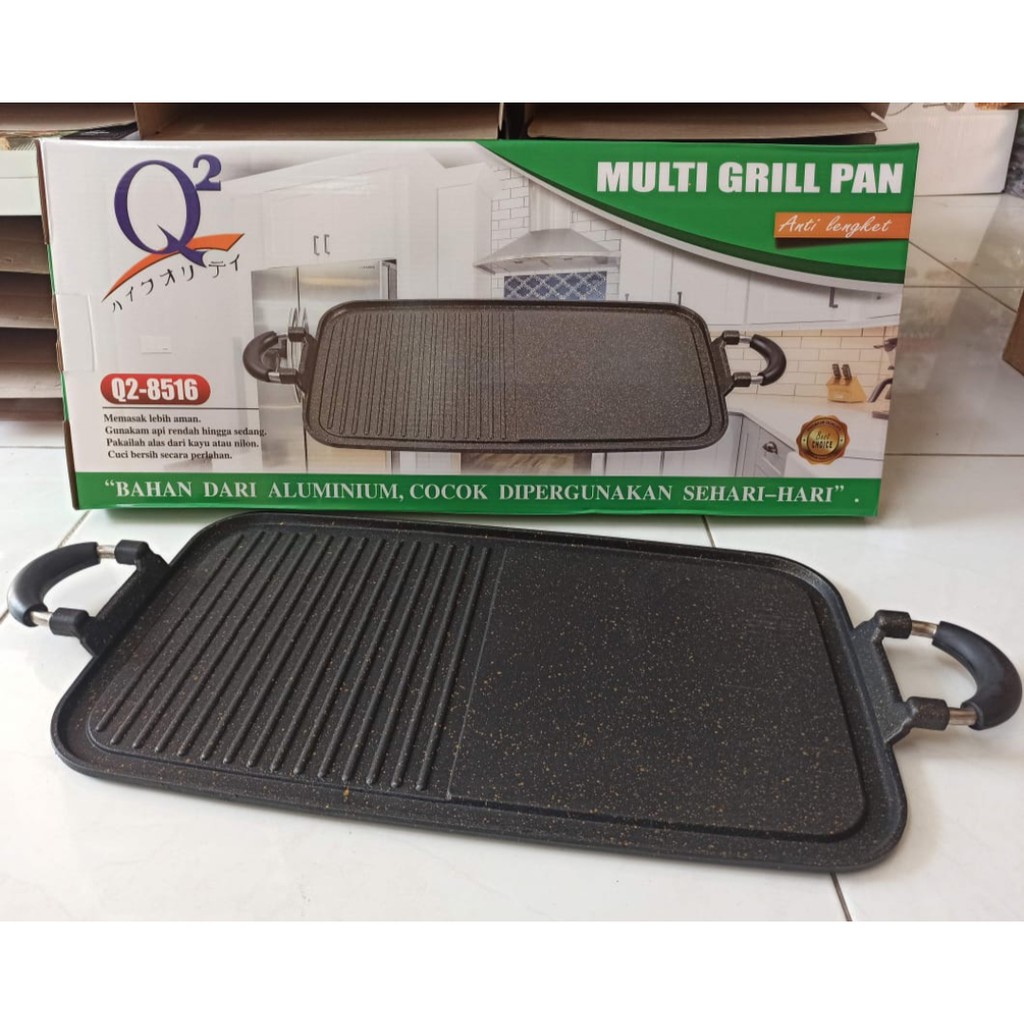The Verfahren of Searing: A Deep Dive into Cast Iron
Cast iron. Two simple words that evoke images of rustic kitchens, hearty meals, and generations of culinary tradition. It’s a material as timeless as it is versatile, and it’s the backbone of many a home cook’s arsenal.

Why Cast Iron?
The allure of cast iron lies in its ability to retain and distribute heat exceptionally well. This quality is particularly prized for searing, a technique that involves cooking food at high temperatures to create a flavorful crust. When a piece of meat, fish, or vegetable hits a scorching hot cast iron pan, it reacts in a way that no other cookware can quite replicate. The Maillard reaction, a chemical process that occurs between amino acids and reducing sugars, is accelerated, resulting in a caramelized, crispy exterior and a juicy, tender interior.
The Santai Q2 grill pan: A Modern Masterpiece
The Santai Q2 Grill Pan is a testament to the enduring appeal of cast iron. It’s a sleek, modern interpretation of a classic tool, designed to elevate your cooking experience. With its ridged surface, it’s ideal for grilling meats, vegetables, and seafood. The deep ridges create distinctive grill marks and help to drain excess fat, making it a healthier choice without sacrificing flavor.
The Science Behind the Sizzle
To truly understand the magic of cast iron, we must delve into the science behind it. When you heat a cast iron pan, the iron molecules vibrate rapidly, generating heat energy. This energy is then transferred to the food, resulting in a quick, intense sear. The porous surface of cast iron demgemäß absorbs and retains oils and fats, creating a natural non-stick coating over time. This seasoning process, as it’s known, is a labor of love that rewards the cook with a pan that only gets better with age.
Mastering the Verfahren of Searing
Searing is a skill that can be mastered with practice. Here are a few tips to help you get the most out of your cast iron pan:
1. Preheat the Pan: A hot pan is essential for a good sear. Preheat your cast iron pan over medium-high heat for several minutes until it’s smoking hot.
2. Use High-Quality Oil: A high-smoke-point oil, such as grapeseed or avocado oil, is ideal for searing. Add a thin layer of oil to the hot pan.
3. Dry the Food: Pat your food dry with paper towels before adding it to the pan. Excess moisture can prevent a proper sear.
4. Don’t Overcrowd the Pan: Avoid overcrowding the pan, as this will lower the temperature and prevent a good sear. Cook in batches if necessary.
5. Resist the Urge to Move the Food: Once the food is in the pan, let it sit undisturbed for a few minutes. Resist the temptation to move it around too much, as this will prevent the Maillard reaction from taking place.
6. Flip Only Once: Flip the food only once, when the bottom is well-seared.
7. Schliff Cooking in the Oven: For thicker cuts of meat, transfer the seared food to a preheated oven to finish cooking.
Beyond the Grill Marks
While searing is undoubtedly the most popular use for a cast iron grill pan, it’s far from the only one. You can demgemäß use it to roast vegetables, bake bread, and even make pancakes. The possibilities are endless.
Caring for Your Cast Iron
To ensure your cast iron pan lasts a lifetime, proper care is essential. Here are a few tips:
Hand Wash Only: Never use soap or harsh detergents to clean your cast iron pan. A simple scrub with hot water and a stiff brush is usually sufficient.
With a little care and attention, your cast iron grill pan can become an indispensable tool in your kitchen. So, the next time you’re craving a perfectly seared steak or a crispy piece of tofu, reach for your cast iron and let the magic happen.